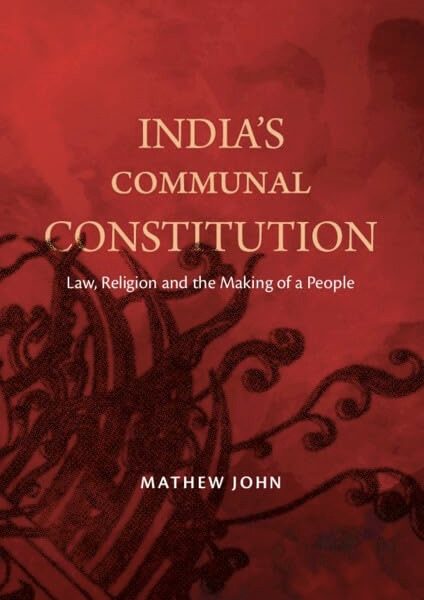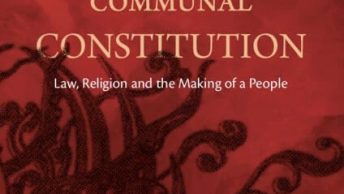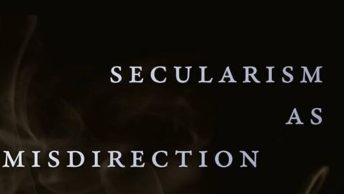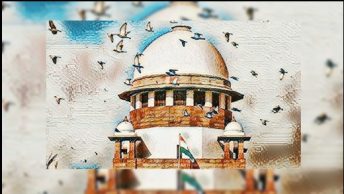Summary: In this final instalment, we present the response by author Prof. Mathew John regarding his latest book, India’s Communal Constitution: Law, Religion and the Making of a People. following the introduction to the book and reviews by Alok Prasanna Kumar, and Talha Abdul Rahman, Prof. Rinku Lamba (Part I and II). LAOT is extremely grateful to Prof. John in giving us this opportunity to feature his fantastic book.
As an author there is no greater privilege to have one’s work put to the careful and thoughtful examination of peers. I am therefore extremely grateful to Archita Satish and her colleagues at the ‘Law and Other Things’ blog for hosting this seminar, and to Alok Prasanna Kumar, Talha Abdul Rahman, and Rinku Lamba for their reconstruction, comment, and critique of my book India’s Communal Constitution (“ICC”).
As all three responses (especially the first post by Alok Prasanna Kumar) have given readers an overview of the book, I will mainly stay with the critique and questions that have been posed. Even so, it would be useful to start by echoing all three commentators as they have accurately recounted my presentation of the Indian Constitution from a vantage point that is primarily descriptive and diagnostic. As a diagnostic foray into Indian constitutionalism, ICC presents a decidedly non-normative account of the communally inflected form of identifying the Indian people in Indian constitutional design and practice – an account, it has juxtaposed alongside the dominant liberal vision of the Indian Constitution and its people. Therefore, as a descriptive diagnostic account that does not aim to normatively choose or evaluate among contending visions of the Indian people, ICC aims to bring to view the living presence of a communal form of imagining the Indian people which is shaded out by the hegemonic presence of the liberal view of the Indian Constitution.
As the presentation of a marginal (though politically significant) view of the constitutional character of the Indian people, it is only natural that much of the comment in this discussion have centred their attention on the book’s characterisation of the people that authorise the Indian Constitution and the methodological routes through which ICC sought to assert its argument. Consequently, my response is also organised to address the questions posed to the conceptual contours of ICC and the methodological routes employed.
1. In Response to Talha Abdul Rahman
To start, I would like to draw attention to Talha Abdul Rahman’s description of the book as one that seeks to explore the relationship between “the people who own the Constitution and the crowd that can exert undue influence, examining instances where judicial interpretations have been swayed by popular sentiment.” Even as Rahman rightly picks concerns expressed in ICC about the dangers that the communal constitutional imagination poses to liberal constitutionalism, I must emphasise at the outset that my concerns in ICC were not intended to be as sharply normative as Rahman characterises it. On the contrary it was, as I have mentioned before, intended to be more descriptive and aimed at making plausible the entrenched presence of communal constitutional imagination even as the agential and intentional motivations of the Constitution makers could legitimately be presented as broadly liberal (across its libertarian and communitarian forms).
2. In Response to Alok Prasanna Kumar
Second, even while recognising the presence of communal imagination of the people in Indian constitutional design, Alok Prasanna Kumar disputes what he terms ‘intentionality’ in the judicial evolution of Hindu and Muslim personal law. In his words, “the judicial evolution of religious personal law was an accidental by-product of colonial rule”. While it is true that judicial decision making is in its very nature a creature of contingency, ICC attempts to present a historiography of Indian constitutional imagination in which the cultural and civilisational background of the colonial state brought a new set of conceptual resources to bear to the identification of the Indian people, especially their identity cast through the prism of religion. Therefore, I argue that this conceptual architecture was not pure accident but determined by the European cultural background which, over a period of time mapped religious truths to produce the relatively fixed religious identities of groups we have come to term Hindu, Muslim and so on.
Addressing the contingency of colonial legal norms, Kumar draws on ICC’s discussion of customary law to argue that the evolution of customary law in the colonial state is better understood from the perspective of bureaucratic efficiency as opposed to direction provided by a cultural background. I do not deny the importance of efficiency to the colonial state and do point out to bureaucratically consistent criteria like demonstrable long use, consistency, rationality, and morality which structured the adoption of customary law. However, my discussion of the organisation of religion in religion was woven into an account of constituent processes in the colonial state identified with unique approaches towards toleration, social reform and constitutional representation. It is within this two-century long approach towards thinking about India and its people that the discussion of customary law was located. Of course, efficiency is not a concern that any state would trifle with, but there was a new unique and intentionally directed way in which efficiency was demanded by the colonial state from Indian practice. Most importantly, ICC noted that the peculiarities of custom as brought to view by contrary examples of Khoja or Lingayat practice did not alter fundamental institutional intuitions and assumptions about the character of the Indian people as organised around identities like that of Hindu and Muslim each held together by their respective axiomatic truths. There is more to say about this debate but they are best tied into methodological objections and questions that the commentators have flagged.
Kumar’s methodological objections are perhaps the best way to pivot the discussion from the very idea of the Communal Constitution to the methodological routes that arrive at ICC. Thus, the third theme that this response highlights is Kumar’s contention that the ICC fits into a way of studying law that tends to overemphasise the role of the Indian higher judiciary in shaping constitutional law. It is true that ICC relies considerably on judicial decisions to validate or make plausible its argument about the presence of a communal constitutional imagination in the design and practice of contemporary constitutionalism. However, I must clarify that ICC does not presume that constitutional law is defined by the higher judiciary. On the contrary ICC advances a historiography of colonial constituent imagination in India through an account of toleration, social reform and constitutional representation. To that extent ICC accords primacy to socio-political processes and the working of the higher judiciary is only a site that demonstrates and explains those social and political processes.
3. In Response to Rinku Lamba
The comments by Rinku Lamba poses an extensive list of methodological objections to the manner in which ICC has been argued for and pulled together. Addressing these in turn makes up the fourth prong of this response. Lamba, begins by pointing to a lack of clarity in what is at stake in the vocabulary chosen to make salient the presence of a communal constitutional identification of the Indian people. She does so by asking for clarity on the ‘liberal secular credentials’ of the constitution which is presented as an antagonist of the Communal Constitution. This is especially urgent she argues as there is so much disagreement about what amounts to liberal secular credentials or purposes.
Lamba’s opening argument is a good opportunity for me to clarify my route to the Communal Constitution. ICC is an attempt to identify nationalist tendencies in Indian constitutionalism, especially nationalism that has identified the Indian people along the lines of religious identity. ICC contrasts nationalism with other forms of identifying the people, most notably liberal citizenship, where the people are identified as a community of individual citizens. As well known, liberal citizenship could in turn be organised to foreground or weight individual identity or even communities and groups as debates on libertarian and communitarian accounts of liberal societies have made clear. That is, granting recognition to groups, as for instance in the comment to multiculturalism or to personal law codes, is not fatal for the fundamental premise of equal citizenship. Therefore, I do not think that much is lost in framing liberal citizenship with a broad brush (as Lamba notes) as this methodological choice is a route to distinguishing the varieties of liberalism from the monolithic nationalist identity that marks the Communal Constitution.
Lamba’s next set of objections stem from her concern that even in being a diagnostic framework the identification of toleration cannot be value free and that the values attached to toleration are not lucidly identified. I fully agree that no choice that frames an intellectual project is value free. Consequently, as I have specified in the book, the Communal Constitution is a historiographical hypothesis on the nature of constituent imagination in colonial India whose imprint continues to define the identity of the people in contemporary India. Thus, when ICC identifies toleration as an axis of colonial constituent imagination, its principal aim is merely to show that toleration was organised to identify the peoples of India understood to be Hindu and Muslim with axiomatic truths or doctrines. This produces the arguably undesirable result of sharpening identities associated with being Hindu or Muslim but nothing in ICC turns on these consequences. Thus, the only stakes that I attach to the identification of toleration as an axis of constituent imagination is conceptual, and seeking to explain what I argue is a new form of constitutional identification by the state of its people. In arriving at this conceptual account. I draw on important European thinkers (For example, Rawls, who argues that political liberalism was born out of values like toleration produced by the wars of religion), to argue that toleration travelled to India (on the archival record) and that it produced the people of India anew in its various avatars. (as demonstrated in much postcolonial work like for example the work of Partha Chatterjee and Sudipta Kaviraj)
A further set of concerns that Lamba notes is the lack of congruence between colonially determined and governmentalized identities and the forms in which people perceive themselves to be part of or apart from such identities. Here also, I am unsure why this should be a problem for my conceptual reconstruction of the Communal Constitution. The Communal Constitution attempts to advance a conceptually coherent account of colonial constitutional imagination. Further, ICC itself has tried to account for the slippages that result when this act of constitutional abstraction attempts to latch onto and characterise the India people. These slippages are undoubtedly tied to the march of modernity and democracy in India. However, for the present purpose, the only point that bears clarification is that these slippages do not take away from the consistency over time that I think one can see in the characterisation of India and its people via the Communal Constitution.
4. Conclusion
Thus, to reconstruct my efforts in ICC, I have attempted to locate and map the Communal Constitution as part of the contests over the identity of the Indian people over the last two centuries. Even as the Communal Constitution and its conception of the Indian people occupied centre stage in this effort, it was set off against the post-independent backdrop of the liberal form of identifying the people as a community of citizens. Along the way, the book had to confront what it found and presented as plural and federal conceptualisations of the Indian people. Across all these forms of characterising the people, the principal labours of ICC were limited only to make plausible the presence of colonial and communal constitutional imagination in a field that has come to be conceptually dominated by the liberal view of the people as citizens. The hegemony of the liberal account of the people often obscures the political nature of the order it has held together through its central norms – liberty, equality, public reason and so on. However, at a moment when those norms are under challenge across the world, the effort of the ICC was an attempt to characterise the alternative routes of articulating the people as they have always pushed against liberal politics. Thus, even as the book is clear that it has no clear answers to the challenges of defending human freedoms in the increasing uncertainties of the contemporary world, it does joint efforts in framing that predicament from the Indian constitutional experience, especially as the hopes of freedom are increasingly being consumed by nationalist politics. Consequently, this discussion has given me a chance to think through my book against these broader concerns and for that opportunity that I am thankful to all commentators in this discussion for their careful and thoughtful comments.
Mathew John is Faculty at the School of Law, BML Munjal University
[Ed Note: This Book Discussion was coordinated and edited by Archita Satish and posted by Baibhav Mishra from the technical team of the Student Editorial Board]






İstanbul’da görev yapan bir vergi avukatı, vergi hukukunun birçok alanında profesyonel hizmet sunar. Öncelikle, mükelleflerin karşılaştığı vergi denetimleri sırasında gerekli tüm belgelerin hazırlanması, denetim sürecinin hukuka uygun yürütülmesi ve olası cezaların önlenmesi gibi konularda destek sağlar. Aynı zamanda, vergi inceleme raporlarına itiraz süreçleri, vergi mahkemelerinde açılacak davalar, temyiz ve istinaf süreçleri gibi aşamalarda da müvekkilini temsil eder. İstanbul vergi avukatı, özellikle ticaretle uğraşan kişi ve kurumların sıklıkla karşılaştığı KDV iadesi, vergi yapılandırmaları, matrah artırımı gibi teknik konularda da uzmanlık sunar.
People enjoy different forms of gambling, such as card games, sports betting, and lotteries. Online platforms have introduced new options like slots and live dealer games. Among these, https://nyekryptocasinoer.com/ are gaining popularity for their fast transactions and enhanced security features.